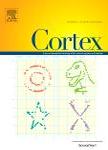版权所有:内蒙古大学图书馆 技术提供:维普资讯• 智图
内蒙古自治区呼和浩特市赛罕区大学西街235号 邮编: 010021

作者机构:Univ British Columbia Dept Psychol Vancouver Campus2136 W Mall Vancouver BC V6T 1Z4 Canada Univ British Columbia Sch Kinesiol Vancouver BC Canada Univ Northern British Columbia Off President Prince George BC Canada Univ Bristol Sch Expt Psychol Bristol Avon England
出 版 物:《CORTEX》 (皮质)
年 卷 期:2020年第122卷第0期
页 面:253-262页
核心收录:
学科分类:0402[教育学-心理学(可授教育学、理学学位)] 1002[医学-临床医学] 1001[医学-基础医学(可授医学、理学学位)] 10[医学]
基 金:Natural Sciences and Engineering Research Council of Canada [12R80338]
主 题:Split-brain S-R compatibility Visuomotor space Spatial coding
摘 要:Each cerebral hemisphere primarily controls and receives sensory input with regard to the contralateral hand. In the disconnected brain (split-brain), when the hands are uncrossed, direct visual access to each hand is available to the controlling (contralateral) hemisphere. However, when a hand crosses the midline, visual and tactile information regarding the hand are presented to different hemispheres. It is unknown how a contralateral hemisphere codes the position and orientation of a visually inaccessible hand in the disconnected brain. The present work addresses this issue. We ask how each hemisphere represents its hand across hand positions that span the midline in the absence of cortical input from the contralateral hemisphere. In other words, when a hand is placed across the midline and is visually inaccessible, is it represented by the controlling hemisphere: (1) in accordance with its new position with respect to the body (e.g., a left hand becomes a right effector when it crosses the midline), (2) with left/right position information unaltered (e.g., the left hand is represented as left regardless of its location), or (3) stripped of its location information altogether? The relationship between hand position and the spatial codes assigned to potential responses (an index of hand representation) was investigated in two split-brain patients using direct (Experiment 1) and orthogonal (Experiment 2) S-R compatibility paradigms. S-R compatibility effects in split-brain patients were consistent with those displayed by typical individuals. These findings suggest that position-based compatibility effects do not rely on cross-cortical connections. Rather, each hemisphere can accurately represent the full visuomotor space, a process that appears to be subserved by subcortical connections between the hemispheres. (C) 2018 Elsevier Ltd. All rights reserved.